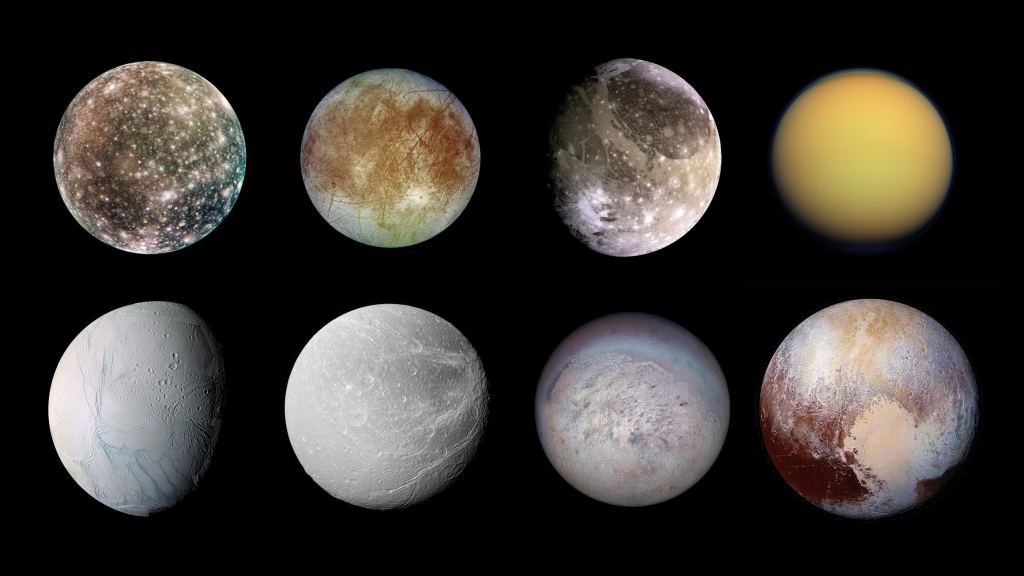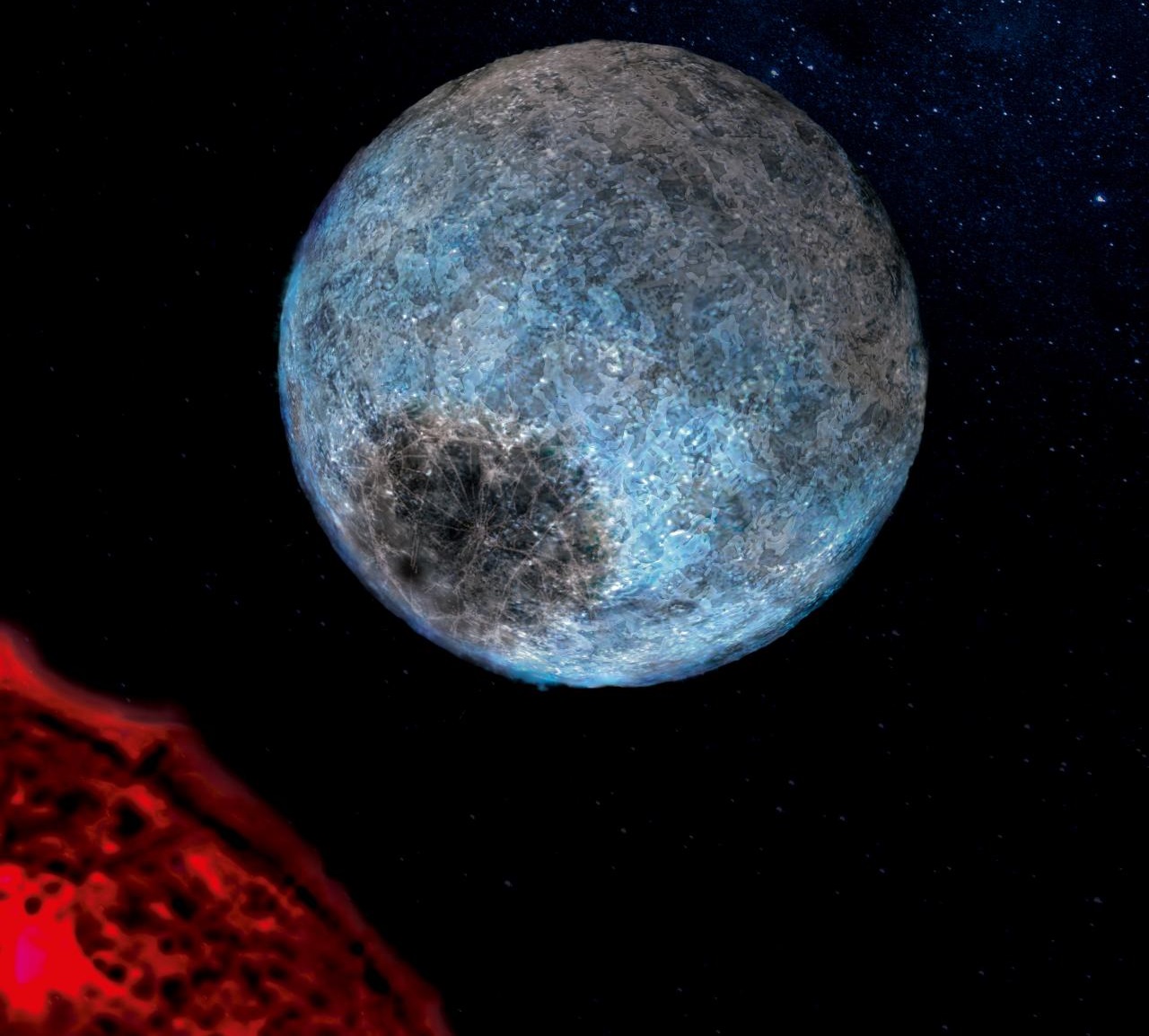As of December 19th, 2022, 5,227 extrasolar planets have been confirmed in 3,908 systems, with over 9,000 more awaiting confirmation. While most of these planets are Jupiter- or Neptune-sized gas giants or rocky planets many times the size of Earth (Super-Earths), a statistically significant number have been planets where water makes up a significant part of their mass fraction – aka. “water worlds.” These planets are unlike anything we’ve seen in the Solar System and raise several questions about planet formation in our galaxy.
In a recent study, an international team led by researchers from the University of Montreal’s Institute for Research on Exoplanets (iREx) found evidence of two water worlds in a single planetary system located about 218 light-years away in the constellation Lyra. Based on their densities, the team determined that these exoplanets (Kepler-138c and Kepler-138d) are lighter than rocky “Earth-like” ones but heavier than gas-dominated ones. The discovery was made using data from NASA’s now-retired Spitzer Space Telescope and the venerable Hubble Space Telescope.
The team was led by Caroline Piaulet, a researcher and Ph.D. candidate with the iREx, as part of her Ph.D. thesis. She was joined by astrophysics Professor Björn Benneke, her Ph.D. advisor at iREx, and researchers from the Austrian Academy of Science’s Space Research Institute, the Flatiron Institute’s Center for Computational Astrophysics, the NASA Exoplanet Science Institute (NExSci), NASA Goddard Space Flight Center, and multiple universities. The paper that describes their findings recently appeared in the journal Nature Astronomy.

During her internship with iREx, Piaulet’s work consisted of using transit and eclipse spectroscopy data obtained by Spitzer, Hubble, and the James Webb Space Telescope (JWST) to determine the composition of intermediate-sized exoplanets – those are between Earth and Neptune in terms of size. This is where water worlds reside, planets that are more massive than Earth but many times the volume – meaning they have significantly lower densities. As Benneke explained in a previous NASA press release:
“We previously thought that planets that were a bit larger than Earth were big balls of metal and rock, like scaled-up versions of Earth, and that’s why we called them super-Earths. However, we have now shown that these two planets, Kepler-138c and d, are quite different in nature and that a big fraction of their entire volume is likely composed of water. It is the best evidence yet for water worlds, a type of planet that was theorized by astronomers to exist for a long time.”
The exoplanets addressed in this study were previously discovered in 2014 by the Kepler Space Telescope using the Transit Method, which also detected a third exoplanet (Kepler-198b) orbiting closer to the star. Between 2014 and 2016, Benneke and his colleague Diana Dragomir (University of New Mexico) came up with the idea of observing the planetary system with Hubble and Spitzer to look for more transits of Kepler-138d to study its atmosphere. Alongside Piaulet, the team was able to constrain the size of Kepler-198c and d based on 13 transit observations made by Hubble and Spitzer.
These were combined with new radial velocity measurements of the host star made with the High-Resolution Echelle Spectrometer (HIRES) at the W.M. Keck Observatory. This allowed the team to constrain the size and mass of Kepler-198c and d, leading them to produce size estimates of roughly two Earth masses, suggesting they were “Super-Earths.” These findings also indicate that Kepler-198c and d are “twin” planets, with virtually the same size and mass – contradicting previous estimates that they were radically different.

However, their estimates also indicate that these exoplanets are roughly three times the volume of Earth (meaning that they have lower densities). This led to the conclusion that up to half of their volumes consist of volatile elements (the most common of which is water). These results were surprising because most exoplanets studied in detail so far (slightly larger than Earth) have all appeared to be rocky. According to researchers, the closest comparison would be some of the icy moons in the outer solar system (like Europa, Enceladus, Ganymede, Titan, etc.).
These bodies are largely composed of water and other volatiles surrounding a rocky-metallic core, leading to the nickname “ocean worlds.” Similarly, “water worlds” may not have surface oceans as Earth does, but interior oceans under a layer of surface ice. As Piaulet explained:
“The way I like to imagine these planets is to think of the icy moons of the outer solar system, for which we believe that large water oceans exist below their icy surface. For Kepler-138 c and d, we might be looking at analogs of our own icy moons, only larger and much closer to the star so that instead of being shielded underneath an ice surface, the water is instead exposed in an extended vapor atmosphere.”
While neither Kepler-138c nor d is located in the habitable zone, the team also noted evidence of a fourth planet in the Hubble and Spitzer data that does! This newly-discovered planet (Kepler-138e) orbits farther from its host star, taking 38 days to complete an orbit, and appears to be similar in size to Mars. However, the characteristics of this planet remain poorly constrained since it doesn’t appear to transit its host star. But with next-generation telescopes like JWST and more sensitive techniques available, astronomers will likely find more water worlds that orbit farther from their stars.

Since it began observing the cosmos, the JWST has demonstrated a key capability by directly imaging the exoplanet HIP 65425 b and obtaining spectra from the atmosphere of WASP-39b. In the latter case, the spectra constituted the first clear evidence of carbon dioxide in this planet’s atmosphere (considered a key biosignature). While at iREx, Piaulet also developed a new method to constrain the atmospheric temperatures of exoplanets from emission spectra that the JWST will obtain. This method will allow astronomers to obtain even more detailed spectra on transiting exoplanets. Said Piaulet:
“This is incredibly valuable from an observer’s standpoint because it means with instruments like JWST, we will be able to actually probe the atmospheres of these worlds and test whether we indeed detect molecules that we believe could make up the atmospheres of such ‘water worlds’ (water, methane, ammonia, etc.). Not only will we then confirm these planets are indeed water worlds, but we could also get first insights into where and how they formed, from the details of their composition.”
Further Reading: NASA, Nature Astronomy

